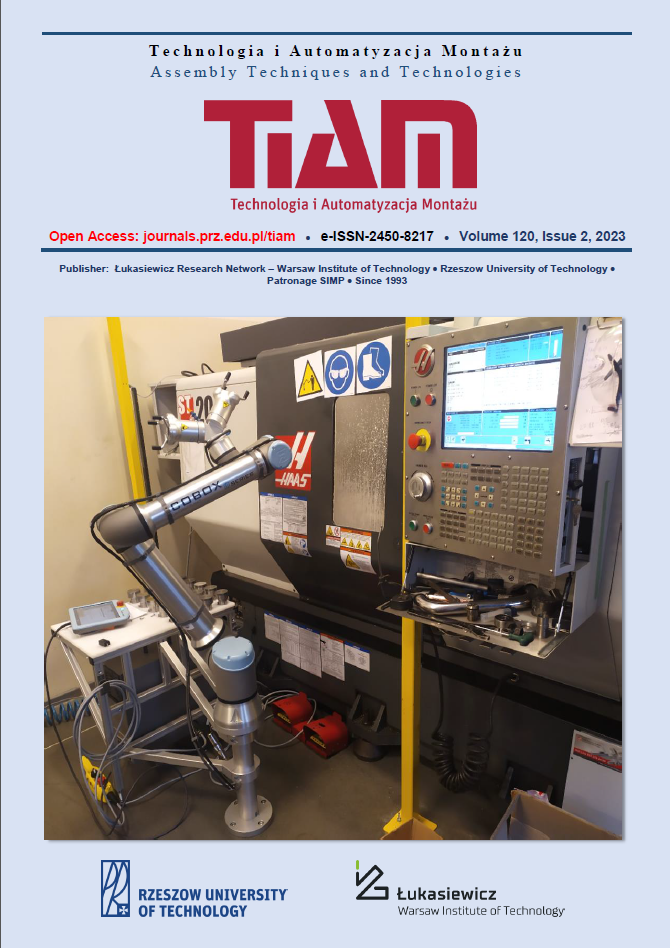Abstract
The continuous development of production and assembly techniques gives rise to the idea of following a new approach in the small-arms ammunition design process. Commonly used intermediate cartridges were designed over 60 years ago, and their construction and assembly processes are not significantly different than what was available almost a century ago. Along with the recent development of individual protection devices and with the general availability of modern ballistic plates utilized in plate carriers type of individual armor, it sparks the necessity of designing a new, intermediate cartridge, using new assembly and technology methods. The vital aspect of the ammunition design process is a determination of the materials utilized in bullet elements and its assembly method. Therefore, there is a necessity of evaluating if different assembly techniques can provide the improved ballistic performance of a bullet.
The paper includes a comparison of two differently assembled projectiles with steel penetrators: a standard Full Metal Jacket and a reverse-drawn Semi-Jacketed bullet. The designs were evaluated in terms of their external ballistic performance for specific initial conditions using 2D Computational Fluid Dynamics simulations and, separately, with a semi-empirical method. The paper aimed to assess the influence of the assembly method on the bullet’s external ballistic performance. Both calculations revealed a nonlinear relation between the projectile méplat diameter and the coefficient of drag, which indicates a limit where the méplat size reduction is beneficial. The results implicate a perspective bullet construction that would provide the user with better external ballistic performance, more consistent and precise than a standard Full Metal Jacket design.
This is an Open Access article distributed under the terms of the Creative Commons Attribution License CC BY 4.0 (https://creativecommons.org/licenses/by/4.0/)
References
Crouch G. I. 2021. “Defence Technology”. Critical interfaces in body armour systems 17 (6): 1887-1894.
NIJ. 2000. Resistance of Personal Body Armor NIJ Standard–0101.04, Washington: U.S. Department of Justice, Office of Justice Programs.
Frost George. 1990. Ammunition making. Washington: National Rifle Association.
Official Journal of the European Union. 2021. COMMISSION REGULATION (EU) 2021/57 of 25 January 2021.
Piasta Krzysztof, Przemysław Kupidura and Grzegorz Leśnik. 2022. “Projectile for a New Intermediate Cartridge”, Problems of Mechatronics. Armament, Aviation, Safety Engineering 13 (4) : 123-126.
Piasta Krzysztof, Przemysław Kupidura. 2023. “Perspective Armour Piercing intermediate Cartridge Projectile”, Problems of Mechatronics. Armament, Aviation, Safety Engineering 14 (1) : 89-104.
McCoy Robert L. 2012. Modern exterior ballistics, Revised 2nd Edition. USA: Schiffer Military, s. 32-34, 71
Muruganantham, V. R., Thoma Babin. “Numerical investigation of hybrid blend design target bullets”, MATEC Web of Conferences 172 01006.
Larson, Eric, Racha Lwali and Dejan Samardzic. 2015. “Bullet Drag Estimation with Compressible Conical Flow Equations and Commercial Software”, Department of Aerospace Engineering and Engineering Mechanics, San Diego State University research.
Rodriguez Sal. 2019. Applied Computational Fluid Dynamics and Turbulence Modeling. Switzerland: Springer Nature, s. 238.
DeSpirito James, Karen Heavey. 2004. "CFD Computation of Magnus Moment and Roll-Damping Moment of a Spinning Projectile", AIAA 2004-4713.
Ansys Inc. 2021. Ansys Fluent Theory Guide. USA: Ansys Inc.
Litz Bryan. 2015. Applied ballistics for long-range shooting. USA: Applied Ballistics LLC, s. 157-162.
Arrow Tech. Prodas V3 Doccumentation.


